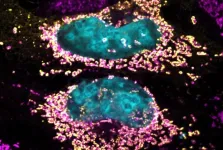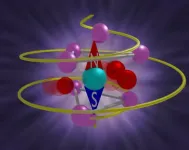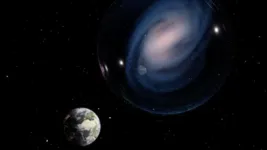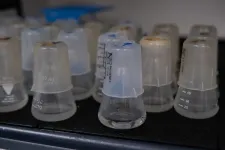(Press-News.org) Critical Path Institute (C-Path) is pleased to announce the release of a new peer-reviewed publication, titled “Transforming Drug Development for Neurological Disorders: Proceedings from a Multi-disease Area Workshop,” now published in Neurotherapeutics, The Journal of the American Society for Experimental Neurotherapeutics.
A distinguished team of C-Path scientists and patient-advocates spearheaded by Diane Stephenson, Ph.D., C-Path’s Executive Director of the Critical Path for Parkinson’s Consortium (CPP), has presented its learnings from C-Path’s 2022 Neuroscience Program Annual Workshop. The publication can be accessed in its entirety here.
Neurological disorders have long posed a formidable challenge to the development of effective therapeutic solutions. These disorders not only contribute significantly to global mortality and disability rates but also introduce distinct challenges in securing drug approvals. Developing novel therapies for neurological indications is very challenging, but there’s renewed hope as notable advancements are underway, transforming the drug development paradigm for both rare and prevalent neurodegenerative diseases.
In October 2022, C-Path and the U.S. Food and Drug Administration (FDA) joined forces to organize the Neuroscience Annual Workshop. This gathering brought together a diverse array of stakeholders from the drug development industry, academia, the patient community and government and regulatory agencies. Its purpose: to chart a transformative course for the development of tools and therapies addressing critical gaps and unmet needs in neurology research and drug development.
This annual workshop placed a spotlight on five chronic progressive diseases that have long eluded effective treatment: Alzheimer’s disease, Parkinson’s disease, Huntington’s disease, Duchenne muscular dystrophy and inherited ataxias. Across three impactful days, participants engaged in deep discussions, exchanged critical insights, and formulated recommendations with the potential to spur the development of innovative therapies and essential tools for addressing these complex disorders.
Key highlights from the workshop Included:
Collaborative Synergy: The workshop underscored the power of collaboration, as representatives from various sectors combined their expertise and resources to create a united front against neurological disorders.
Collective Insights: Participants exchanged invaluable knowledge and experiences, fostering a deeper understanding of the intricacies and nuances surrounding these complex conditions.
Recommendations for Future Action: The workshop yielded a set of forward-looking recommendations aimed at propelling the development of novel therapies and essential drug development tools to address specified chronic progressive diseases.
“The 2022 Neuroscience Annual Workshop showcased how interdisciplinary collaborations can provide significant advancements in the fight against neurological disorders,” said C-Path Chief Science Officer Klaus Romero, M.D., M.S., FCP. “The fusion of diverse perspectives, shared insights, and visionary recommendations is poised to drive innovative solutions and, ultimately, alleviate the burden of these conditions on individuals and society.”
Quotes from patient-advocates that participated in the 2022 workshop:
“In the past, I have experienced firsthand where patient-focused drug development (PFDD) is a trendy buzzword and merely only incorporated when convenient. Back then incorporating the patient voice was often tokenism. This C-Path workshop, with regulatory agencies and industry sponsors, demonstrated that there is a real change evolving in front of us. The participants understood the urgency that those of us with neurodegenerative diseases have and valued us as working partners.” – Kevin Kwok, Pharm.D., Parkinson’s patient-advocate
“I was impressed to see how the FDA and C-Path are working with industry and drug development experts to examine the gaps and unmet needs in patient-focused drug development in neurology and to incorporate the voice of persons living with a disease into clinical trial designs and the drug development process to generate — and integrate —actionable solutions that benefit everyone.” – Joe Montminy, Alzheimer’s patient-advocate
“It is not enough to just have a seat at the table. The voices of patients, care partners, and individuals at risk for neurodegenerative diseases should have a fair amount of weight in decisions that impact design, implementation, and outcomes of studies. We can tell when our involvement is tokenistic and empty, but that was not the case at this workshop. It is clear to me that the message from regulatory agencies is that input from patients and their families is mandatory.” – Jessi Keavney, Parkinson’s advocate
C-Path’s 2023 Neuroscience Annual Meeting is set for Thursday, November 30, in Washington, D.C. This is an important gathering that members of the CPP and CPAD consortia won’t want to miss. Interested participants can learn more by emailing nsannualmeeting@c-path.org.
About Critical Path Institute
Critical Path Institute (C-Path) is an independent, nonprofit established in 2005 as a public-private partnership, in response to the FDA’s Critical Path Initiative. C-Path’s mission is to lead collaborations that advance better treatments for people worldwide. Globally recognized as a pioneer in accelerating drug development, C-Path has established numerous international consortia, programs and initiatives that currently include more than 1,600 scientists and representatives from government and regulatory agencies, academia, patient organizations, disease foundations and pharmaceutical and biotech companies. With dedicated team members located throughout the world, C-Path’s global headquarters is located in Tucson, Arizona and C-Path’s Europe subsidiary is headquartered in Amsterdam, Netherlands. For more information, visit c-path.org.
Critical Path Institute is supported by the Food and Drug Administration (FDA) of the Department of Health and Human Services (HHS) and is 54% funded by the FDA/HHS, totaling $19,436,549, and 46% funded by non-government source(s), totaling $16,373,368. The contents are those of the author(s) and do not necessarily represent the official views of, nor an endorsement by, FDA/HHS or the U.S. Government.
Contacts:
Roxan Triolo Olivas
C-Path
520.954.1634
rolivas@c-path.org
Kissy Black
C-Path
615.310.1894
kblack@c-path.org
END
C-Path’s pioneering neuroscience workshop transforms the landscape of neurological disorder therapies
2023-11-09
ELSE PRESS RELEASES FROM THIS DATE:
How to use AI for discovery — without leading science astray
2023-11-09
Over the past decade, AI has permeated nearly every corner of science: Machine learning models have been used to predict protein structures, estimate the fraction of the Amazon rainforest that has been lost to deforestation and even classify faraway galaxies that might be home to exoplanets.
But while AI can be used to speed scientific discovery — helping researchers make predictions about phenomena that may be difficult or costly to study in the real world — it can also lead scientists astray. In the same way that chatbots sometimes “hallucinate,” ...
Ultrafast lasers on ultra-tiny chips
2023-11-09
Lasers have become relatively commonplace in everyday life, but they have many uses outside of providing light shows at raves and scanning barcodes on groceries. Lasers are also of great importance in telecommunications and computing as well as biology, chemistry, and physics research.
In those latter applications, lasers that can emit extremely short pulses—those on the order of one-trillionth of a second (one picosecond) or shorter—are especially useful. Using lasers operating on such small timescales, researchers can study physical and chemical ...
Pesticides, herbicides, fungicides detected in New York state beeswax
2023-11-09
An analysis of beeswax in managed honeybee hives in New York found a wide variety of pesticide, herbicide and fungicide residues – exposing current and future generations of bees to long-term toxicity.
The study, published in the Journal of Veterinary Diagnostic Investigation, notes that people may be similarly exposed through contaminated honey, pollen and wax in cosmetics. Though the chemicals found in wax are not beneficial to humans, the small amounts in these products are unlikely to ...
Study reveals bacterial protein capable of keeping human cells healthy
2023-11-09
Researchers at the University of São Paulo (USP) in Brazil, partnering with colleagues in Australia, have identified a novel bacterial protein that can keep human cells healthy even when the cells have a heavy bacterial burden. The discovery could lead to new treatments for a wide array of diseases relating to mitochondrial dysfunction, such as cancer and auto-immune disorders. Mitochondria are organelles that supply most of the chemical energy needed to power cells’ biochemical reactions.
An article on the study is published in the journal PNAS. The researchers ...
Endangered thick-billed parrots at risk of losing newly identified, unprotected Sierra Madre forest habitats to logging, deforestation, study shows
2023-11-09
DOWNLOAD PHOTOS AND VIDEO: https://sandiegozoo.box.com/s/x50kzaoukdtyjxsv9mzqgn0fu1m6kddk
A binational team of scientists, using creativity and innovation, adorned dozens of endangered thick-billed parrots with tiny solar-powered satellite transmitters to track and reveal their winter migratory nesting sites in the remote treetops of the Sierra Madre Occidental ranges. Their research reveals new critical habitat, 80% of which has no formal protection.
In a study published this month in the journal Global ...
Atomic dance gives rise to a magnet
2023-11-09
Quantum materials hold the key to a future of lightning-speed, energy-efficient information systems. The problem with tapping their transformative potential is that, in solids, the vast number of atoms often drowns out the exotic quantum properties electrons carry.
Rice University researchers in the lab of quantum materials scientist Hanyu Zhu found that when they move in circles, atoms can also work wonders: When the atomic lattice in a rare-earth crystal becomes animated with a corkscrew-shaped vibration known as a chiral phonon, the crystal is transformed ...
Milky Way-like galaxy found in the early universe
2023-11-09
Using the James Webb Space Telescope, an international team, including astronomer Alexander de la Vega of the University of California, Riverside, has discovered the most distant barred spiral galaxy similar to the Milky Way that has been observed to date.
Until now it was believed that barred spiral galaxies like the Milky Way could not be observed before the universe, estimated to be 13.8 billion years old, reached half of its current age.
The research, published in Nature this week, was led by scientists at the Centro de Astrobiología in Spain.
“This galaxy, named ceers-2112, formed soon after ...
Side-effect avoiding treatment shows early promise against breast cancer in mice
2023-11-09
New experimental evidence suggests that substances known as narrow-spectrum Wnt signaling inhibitors—which could have fewer side effects than other related substances—are capable of suppressing the growth of breast cancer tumors in mice. Aina He of Shanghai Jiaotong University Affiliated Sixth People’s Hospital, China, and colleagues present these findings November 9th in the open access journal PLOS Biology.
While certain subtypes of breast cancer can be targeted with special medications, others can only be treated with standard chemotherapy. For some patients, chemotherapy may lead to the growth of stem cell-like cancer cells that are drug resistant. Previous ...
Bacteria-virus arms race provides rare window into rapid and complex evolution
2023-11-09
As conceived by Charles Darwin in the 1800s, evolution is a slow, gradual process during which species adaptations are inherited incrementally over generations. However, today biologists can see how evolutionary changes unfold on much more accelerated timescales.
Rather than the evocative plants and animals of the Galapagos Islands that Darwin studied in forming his theory of evolution, Postdoctoral Scholar Joshua Borin and Associate Professor Justin Meyer of UC San Diego’s School of Biological Sciences are documenting rapid evolutionary processes in simple laboratory flasks.
Borin ...
Open-science “COVID Moonshot” discovers new antivirals to treat COVID-19
2023-11-09
Although the group’s work has been freely available since its inception in March 2020, the COVID Moonshot Consortium is finally formally reporting their results. The COVID Moonshot – an open-science, crowdsourced, and patent-free drug discovery campaign targeting the SARS-CoV-2 virus – has yielded a wealth of data on the virus’s main protease, including insights that could pave the way for the development of new and better therapeutics. “The lead therapeutics described by [these researchers] may not be ready in time to affect the current pandemic, considering the timelines and challenges of drug approval,” write Brian Shoichet and Charles ...






